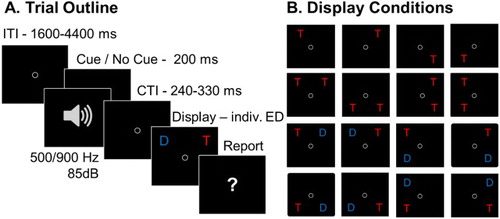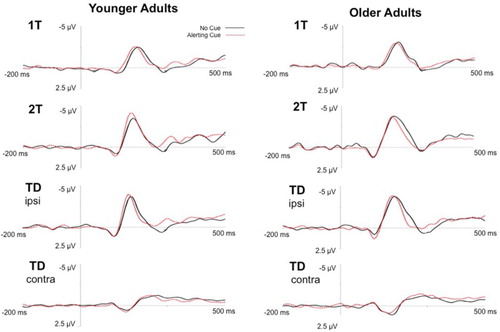Figures & data
Table 1. Descriptive summary of older participant screening.
Figure 1. Task procedure and stimuli. (A) Trial sequence in the partial-report task. Half of the trials included an auditory warning cue that was played shortly before the onset of the stimulus display. (B) 16 conditions with varying target and distractor configurations. Targets (“T”) were presented in red and distractors (“D”) were presented in blue.

Figure 2. Parameter estimates. Parameter estimates of (A) sensory effectiveness a, (B) spatial bias windex, and (C) top-down control α for younger adults (grey bars) and older adults (red bars). Error bars indicate standard errors of the means.

Table 2. Descriptives for (A) TVA parameter estimates and (B) ERL latencies measured in four display conditions of the partial report task (1T: single target letter, 2T ipsi: target plus second target in the ipsilateral hemifield, TD ipsi: target plus distractor the ipsilateral hemifield, TD contra: target plus distracter in the contralateral hemifield), separately for trials with (cue) and without an alerting tone (no cue) in the groups of younger adults and older adults. Reported are means and standard deviations (in parentheses).
Figure 3. Event-related lateralizations. Grand-averaged ERLs for (A) younger adults and (B) older adults comparing trials with alerting cue (red dashed line) and no cue (black solid line) in the partial report conditions with a single target (1T), two targets in the same hemifield (2T), target and distractor in the same hemifield (TD ipsi), and target and distractor in opposite hemifields (TD contra).

